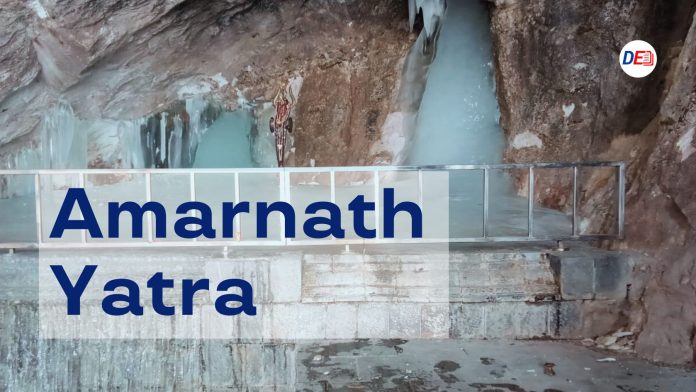Sumedha Manhas
Devotees and Pilgrims from all around the country await the Shri Amarnath Ji yatra that takes place in the months of July to August to pay homage to Lord Shiva at the sacred Amarnath Cave, where an ice lingam forms naturally each year.
Amarnath Yatra is a journey of spiritual and religious fulfillment, however undertaking this journey requires thorough preparation to ensure safety, comfort and inner satisfaction. Here’s what you need to know before embarking on this sacred trek-
The Registration for Amarnath Yatra with the Shri Amarnathji Shrine Board (SASB) is mandatory for all pilgrims. The facility of registration through online mode can be availed through the official website or the mobile application “Shri Amarnathji Yatra”. According to the guidelines – No pilgrim less than 13 years of age or more than 70 years of age, and no lady with more than six weeks pregnancy is eligible to be registered for the Yatra. The attending Yatris are required to upload clear scan copies of Compulsory Health Certificates authorized by Doctors post 8th April 2024 along with a passport size photograph. All Yatris are also required to carry a valid identity proof.
The Amarnath Cave pilgrimage in Jammu & Kashmir, India, offers two main trekking routes, each with distinct characteristics. Pahalgam, a town in the Anantnag district, serves as the traditional starting point for pilgrims embarking on the approximately 45-kilometer journey. This route is known for its gradual ascent, providing pilgrims with a longer but less steep path to the cave. Along the way, trekkers pass through the Lidder River, lush meadows, and occasional settlements, offering moments of tranquility.
Alternatively, the Baltal route, starting from a small town north of Sonamarg in the Ganderbal district, covers a shorter distance of about 14 kilometers but involves a steeper and more demanding ascent. Despite its challenges, this route attracts pilgrims seeking a quicker pilgrimage experience due to its shorter duration.
The Amarnath Cave is situated at an altitude of about 3,888 meters (12,756 feet). The trek is usually for about 3-4 days, depending upon the pace of the pilgrim and the starting point of the journey. Pilgrims usually spend a day at the cave for darshan (worship) before returning to the base camp.
Along both routes, temporary camps are set up by the government and private agencies to accommodate pilgrims. Basic facilities such as tents, food stalls, medical aid centers, and toilet facilities are available at designated stops. Though basic medical facilities are available along the route, carrying personal medications and a first aid kit is advisable.
Warm clothing, including thermal wear, gloves, and a cap, A raincoat (for unexpected rain or snow), sturdy, waterproof trekking shoes with good grip, Torch with batteries, Power Banks for phone charging, Personal medication (if any) are essentials for the Yatra.
The pilgrimage is managed by the Shri Amarnathji Shrine Board (SASB), which ensures security and provides support services along the trekking routes. Security personnel are deployed to ensure the safety of pilgrims throughout the journey.
Preparation is key to ensuring a safe experience. By understanding the route, preparing adequately, adherence to guidelines and respecting the environment and local customs, one can make the most of this sacred pilgrimage.


